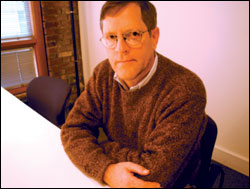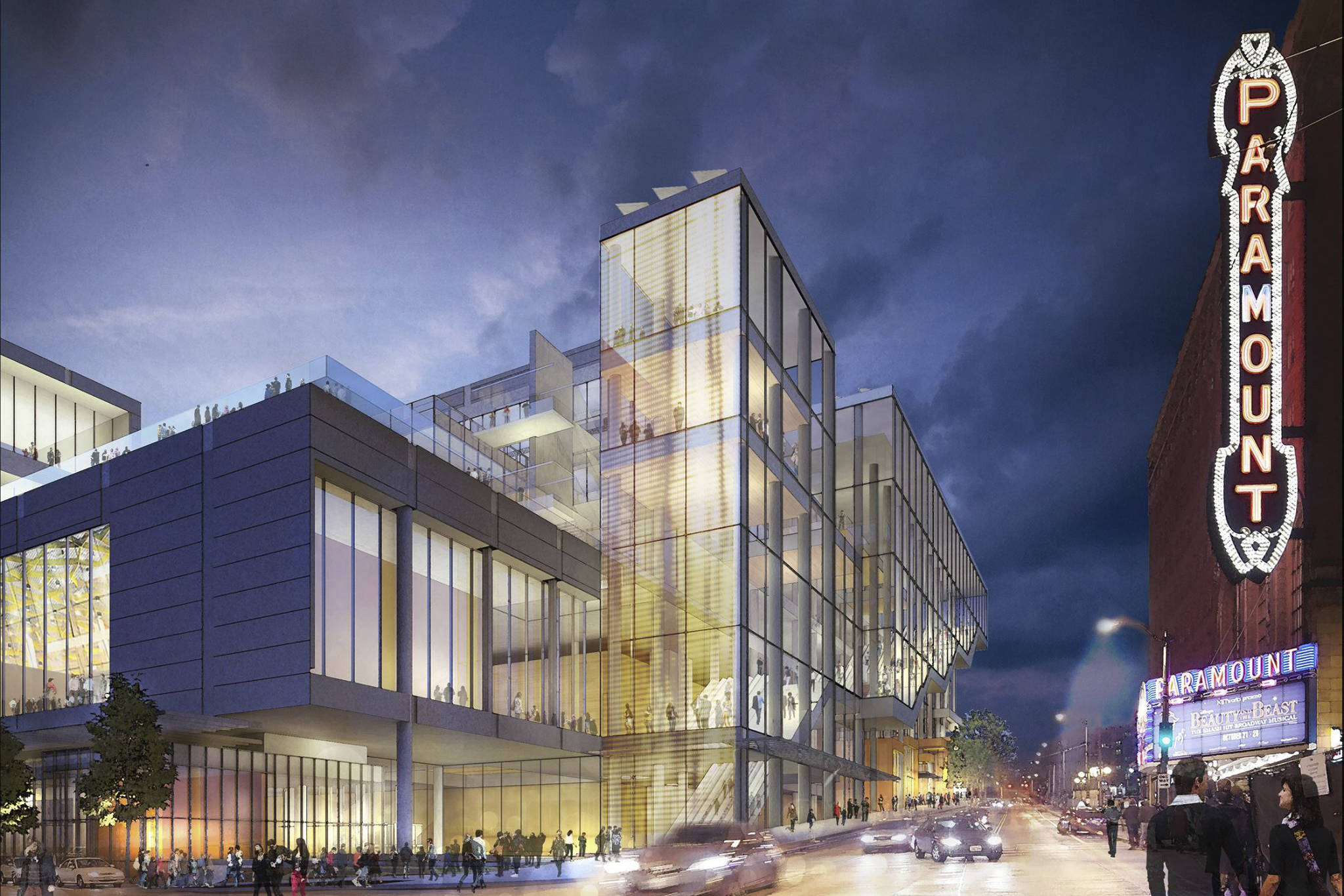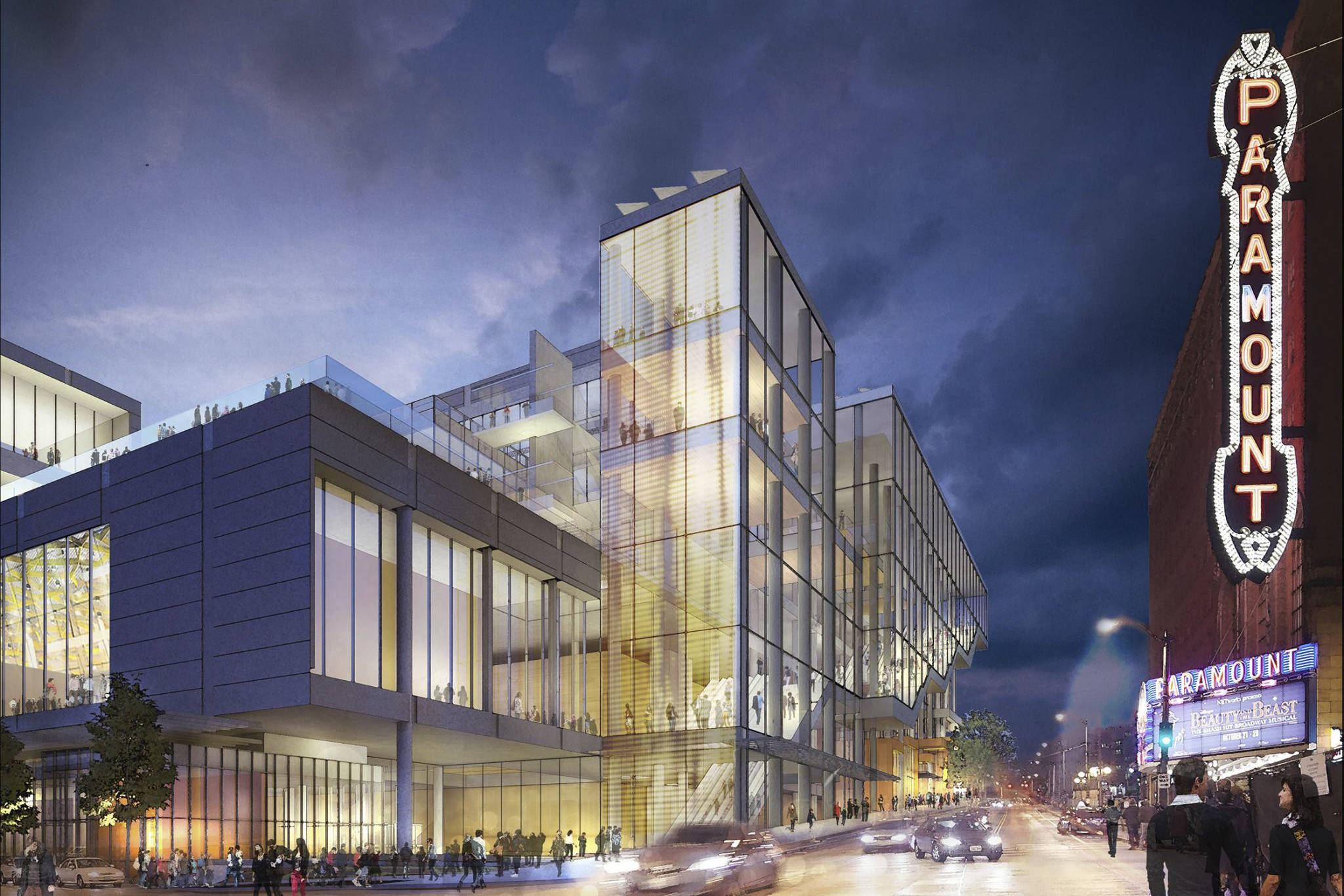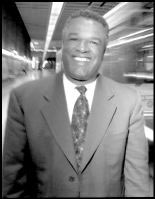ALEC FISKEN ADMITS he’s a reactionary. The Port commissioner-elect makes the admission with a sly grin, but he is arguing a point. “There is this image that people carry around about the waterfront: ‘The world has changed. The new world is microbiologists and condos on the water.’ That’s not true. We are going to be fishing forever. There are going to be containers coming and going across the water forever.”
This year’s race between Fisken and six-year incumbent Port Commissioner Clare Nordquist, a Bellevue venture capitalist, turned into a debate about the future of Seattle’s waterfront. Nordquist was an advocate for the “progressive” forces at the Port of Seattle who want to redevelop some of the Port’s property in Interbay into a mixed-use “creative community” of housing, retail, and industry, anchored by a campus for a 21st-century “knowledge” business like biotechnology. Fisken thinks the land should stay in use for marine industry, like a maintenance base for the Washington State Ferries. Observers say Fisken’s victory in this month’s election will change the dynamics at the Port, and not everyone thinks it’s for the better.
THE PORT OF SEATTLE is a government created by the citizens of King County in 1911. The Port owns the shoreline that constitutes Seattle’s working waterfront, including industrial Harbor Island and Fishermen’s Terminal. Its dominant division, however, is Aviation, which owns Seattle-Tacoma International Airport, accounts for half the Port’s roughly 1,600 employees, and provides most of the Port’s 2004 operating revenue of $363 million. That revenue stream is also dependent on property taxes from King County, which will be $59.6 million in 2004. The Port has a part-time, five-member commission that is elected at-large in King County and is charged with setting policy.
LAST DECEMBER, the Port Commission created a new Economic Development Division that is focusing on redevelopment of some of the Port’s property. Last month, the commission authorized $5.6 million to study the redevelopment of 57 acres of Interbay near Terminals 90 and 91. It was hailed by people like former commissioner and Seattle Mayor Paul Schell, who saw it as evidence that the Port was moving tentatively into the 21st century. “The Port needs to focus on how they can support the new technology industry,” says Schell. He thinks Fisken is focusing on the wrong priorities. “It is reactionary to say we are going to hold on to yesterday’s dream.”
Fisken’s love of Seattle’s seaport began right after college. He moved here and couldn’t find a job, so he began doing day labor on the waterfront. As a Yale graduate, he didn’t stay on the waterfront for long, but some of his other work kept his interest in marine issues alive: He worked as an investment banker for 10 years, and his portfolio included marine finance; for nine years he was a publisher and editor of marine trade publications. Currently he is a senior policy adviser in the city of Seattle’s Office of Policy and Management. His views on the working waterfront are very much in sync with those of his boss, Mayor Greg Nickels. He was the underdog in the Port race, outspent by the incumbent nearly three to one, but he was backed by a strong grassroots coalition that included labor, environmentalists, and gay activists.
Fisken didn’t run as the good-news candidate. “The Port is facing some very, very difficult problems,” he says. “It is now in financial difficulty, and it should not diversify.” Instead of trying real-estate development, Fisken wants the Port to figure out how to do better in the container-shipping business that constitutes about 80 percent of its seaport revenue. Fisken wants the Port to move more containers through its terminalswhich are operated by corporations like Hanjin and Stevedore Services of Americaand realize more revenue by doing so.
Pat Stambor, a public-interest activist who has served on Port committees, doesn’t believe that Fisken can succeed. “The Port can’t compete very well. Tacoma pretty much has undercut them.”
Fisken can point to some recent positive trends, however: The Port of Seattle was just rated No. 1 in customer satisfaction among all U.S. ports in a nationwide survey of 1,200 shippers by Marine Digest; the shipping business grew in Seattle by 8.5 percent last year and 8 percent this year, according to Port Commissioner Lawrence Molloy, although he concedes Seattle’s 10-year average is only 2 percent, while the Port of Vancouver’s is 13 percent. Fisken says, “The trans-Pacific container business is going to grow over the next 20 years. There isn’t any reason that Seattle can’t continue to get a significant market share.”
OBSERVERS ON BOTH sides of the debate say Fisken will strengthen the commission’s advocacy for the working waterfront, joining stalwarts like commissioners Pat Davis and Molloy. Commissioner Bob Edwards is seen as a swing vote, while Paige Miller is now the body’s biggest enthusiast for real-estate development to seek new industries.
“I have a real task,” says Fisken. “It’s fun being a real-estate developer. I can stand up and rail about it, but that doesn’t get me anywhere. I need to convince people that those plans are futile and will lose them money. Plus, even harder, I need to convince them that there are good alternatives within the [marine-industrial] zoning. I can do it. I believe logic is so clearly on my side.”








